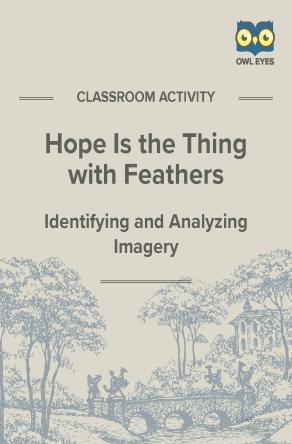Hope Is the Thing With Feathers Imagery Activity
- 8 pages
- Subject: Imagery, Tone, Lesson Plans and Educational Resources
- Common Core Standards: RL.11-12.1, RL.11-12.4, RL.11-12.5, RL.9-10.1, RL.9-10.4
Product Description
In “Hope Is the Thing With Feathers,” Emily Dickinson offers a short but powerful ode to hope, a human force she characterizes as a bird. In the face of all kinds of chaos and extremity—storms, cold landscapes, and foreign seas—hope runs like a persistent thread. Dickinson uses imagery to emphasize the comfort and warmth of hope against the dire backdrop of danger and tribulation.
Skills: analysis, drawing inferences from text, close reading, identifying the relationship between words
About This Document
The Owl Eyes Imagery activity gives students an opportunity to practice identifying and analyzing imagery. Imagery within a text creates a sensory experience that can connect readers to a text’s setting, atmosphere, or overall aesthetic. Studying imagery will help students understand how narrators or principal characters feel. The main components of this worksheet include the following:
- A brief introduction to the text
- A handout on types of imagery with examples from classic texts
- A step-by-step guide to activity procedure
- Selected examples of imagery from the text
In completing this worksheet, students will learn to identify and analyze different kinds of imagery in order to develop close reading skills and identify the effect imagery has on their reading experience.







